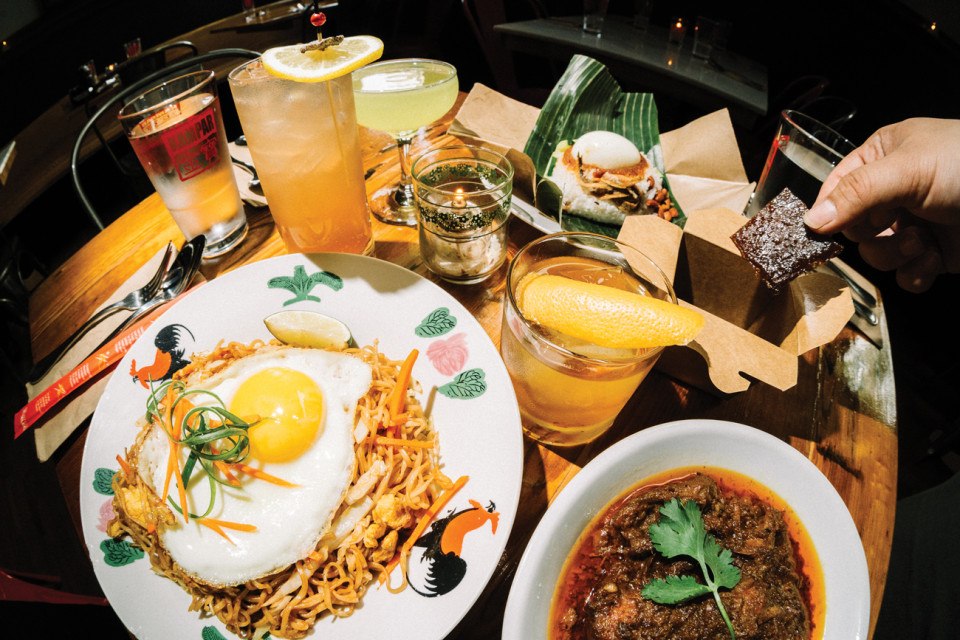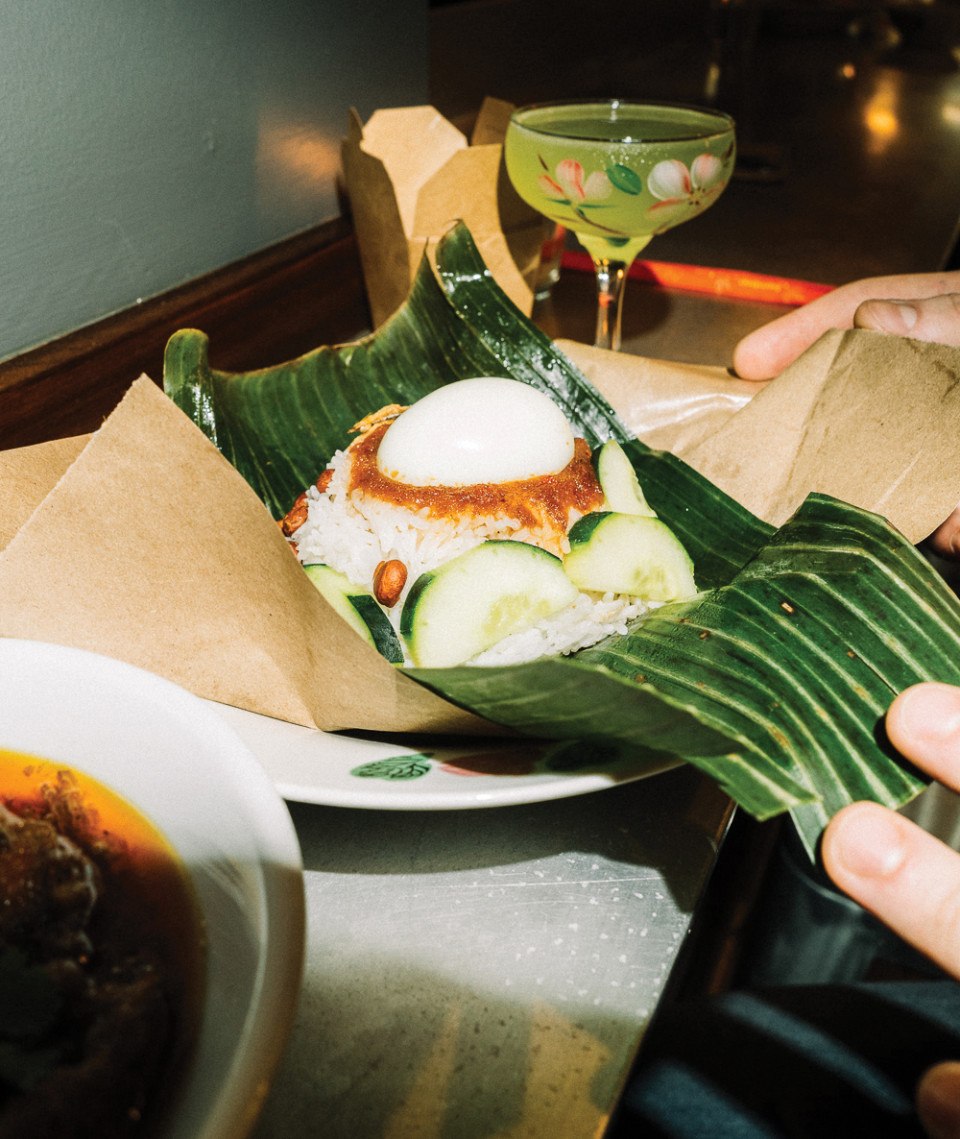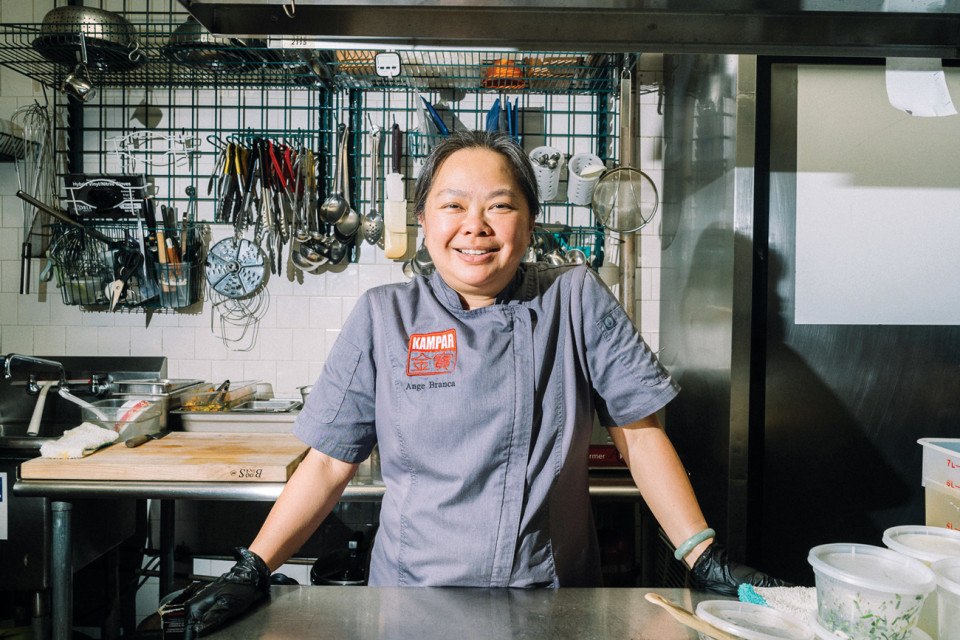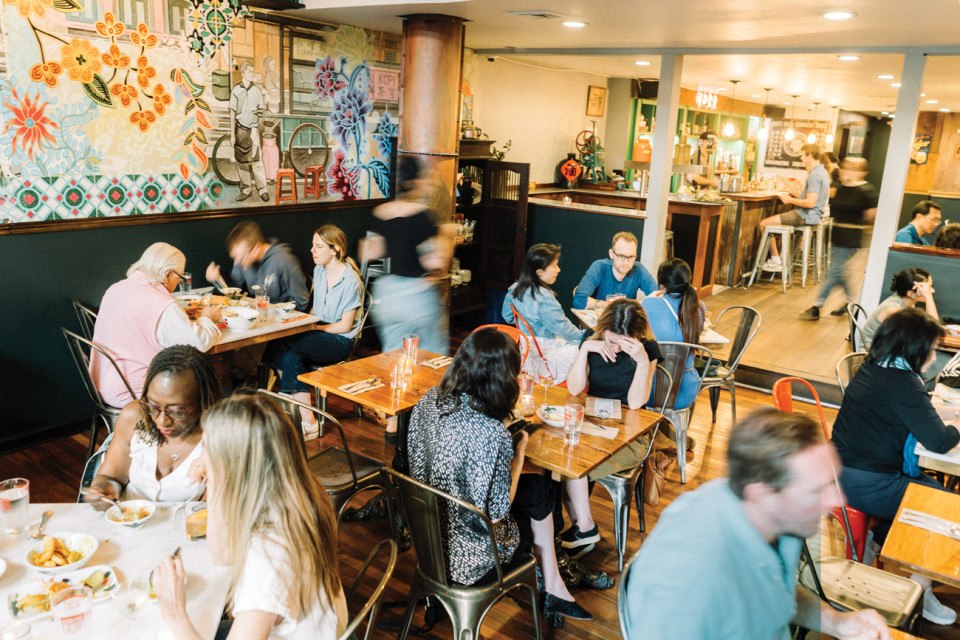A Night Out at Kampar’s Kongsi
Ange Branca returns with a new vision for her old restaurant — complete with beef rendang and nasi lemak.

The old new Kampar / Photography by Paolo Jay Agbay
At the bar, they’re trying to invent a coconut-water daiquiri.
It’s a custom job, a one-off, an experiment made with homemade rice milk and coconuts and just the right rum pulled from the wall behind the bar, and all of this is happening during service — early, in that strange runway moment after the first tables have arrived but before the liftoff of a full dining room, which, I think, is the best possible time to eat at a place like Kampar. It’s when it lets its guard down. When it is its most true self.
“Gotta get the lemak,” a server says to the party next to me — friends, both just back from traveling, colliding with each other in this place that’s like the movie set for some Southeast Asian spy thriller, with its rough edges, jungle-green accents, antique signage and hot, glowing neon. “The achat is like pickled vegetables, on the side, and the rendang? Everyone gets the rendang.”

Nasi lemak at Kampar
She leans when she talks, just relaxing, chatting about her favorite things on the menu and how the crew likes to order them. And the music is loud. Malaysian and Southeast Asian covers of ’60s pop — Nancy Sinatra’s “Bang Bang” and the Animals’ version of Nina Simone’s “Please Don’t Let Me Be Misunderstood” — so I can’t hear everything, but I hear enough to know she’s right. Gotta get the lemak. Here, that’s like Rule Number 1. That’s where you start.
Back in the day, at the original Saté Kampar, the skewered meats were what got people through the door, but the nasi lemak was what made them come back again and again. I was no different. I loved Ange Branca’s version — wrapped in a banana leaf, steamed, with crunchy little bits of fried anchovy sprinkled over the top. Here, now, in this place, she does a version that’s not an homage, not a direct one-to-one copy, but a polished iteration: soft, steamy coconut cream rice in a banana leaf, inside a branded Kampar paper envelope that you pull open at the table. There’s a fiery sambal on top that might be one of my favorite condiments in the world, plus spicy peanuts, the little slivers of fishy anchovies fried like potato sticks, and then a whole egg that you chop up with your fork and mix in together with everything else.
You can get achat on the side, like the server said — vegetables including carrots and cucumbers pickled just like Branca’s aunt used to do it — or a small portion of the kitchen’s beef rendang, slow-cooked for at least six hours with three types of ginger, cinnamon, coconut cream and clove, served like a coconut-milk curry, and you should absolutely do both of those things. Just eat the achat as it comes. But spoon the rendang right into the rice, mix it all up, make a mess, eat every bite.

Ange Branca
This place — this new place that plays like a faded Kodachrome memory of an even older place — is only one-half of Branca’s new restaurant. You walk up a switchback flight of stairs, signs pointing the way, and find your way into her kongsi, her company bar, her social club. She’s got a bar with a full menu of custom cocktails (plus, by the time you get there, maybe a coconut-water daiquiri), thick-cut steak fries doused in brown curry, sweet pork jerky called “Dragon Meat,” and maggi goreng street noodles made with instant noodles, fried in a wok, tossed like stir-fry with shredded cabbage and matchstick carrots, then served with a sunny-side-up egg quivering on top, made to be stabbed and gooshed into the noodles to make a slick and silky sauce.

Upstairs in Kampar’s kongsi
Downstairs, there is something more experimental: a collaboration kitchen with various chefs (the first being Reuben Asaram’s Sunny’s Table and desserts by Cote Tapia-Marmugi of Mole St. Baker) on long residencies working with Branca to bring under-appreciated cuisines to the people. But when I was there, early in the spring, there was only the upstairs, only this fantasy bar and dining room with worn-smooth corners and pale wood floors. I came here late to sit at the bar, eat curry fries and drink too much; early to listen to the house wake up for dinner service, try the kitchen’s chili pan mee, spiced with house shrimp chili crisp and served with a soft-boiled egg bleeding into the bare noodles, and the lemak and the rendang.

Beef rendang at Kampar
Kampar is a restaurant still very much in flux. Its cuisine vacillates between the traditional Malaysian that made Saté Kampar legitimately famous and Branca’s new focus on wok noodles, Chinese Hakka cuisine and A5 Wagyu beef. The bar is still playing around. And the two restaurant concepts are coming together. But all of this fluidity — this sense of a place still coming into its own — that’s what makes Kampar feel real and alive. Impossible as it sounds, Kampar, in its infancy, with its loud music and staff so in love with the food and drinks that they want to talk to everyone about them, is the restaurant that Saté Kampar wanted to be when it grew up. It is the best possible version of itself.
And I can’t wait to see what Ange Branca and her crew do next.
3 Stars — Come from anywhere in Philly
Rating Key
0 stars: stay away
★: come if you have no other options
★★: come if you’re in the neighborhood
★★★: come from anywhere in Philly
★★★★: come from anywhere in America
Published as “The Kampar Comeback” in the July 2024 issue of Philadelphia magazine.


